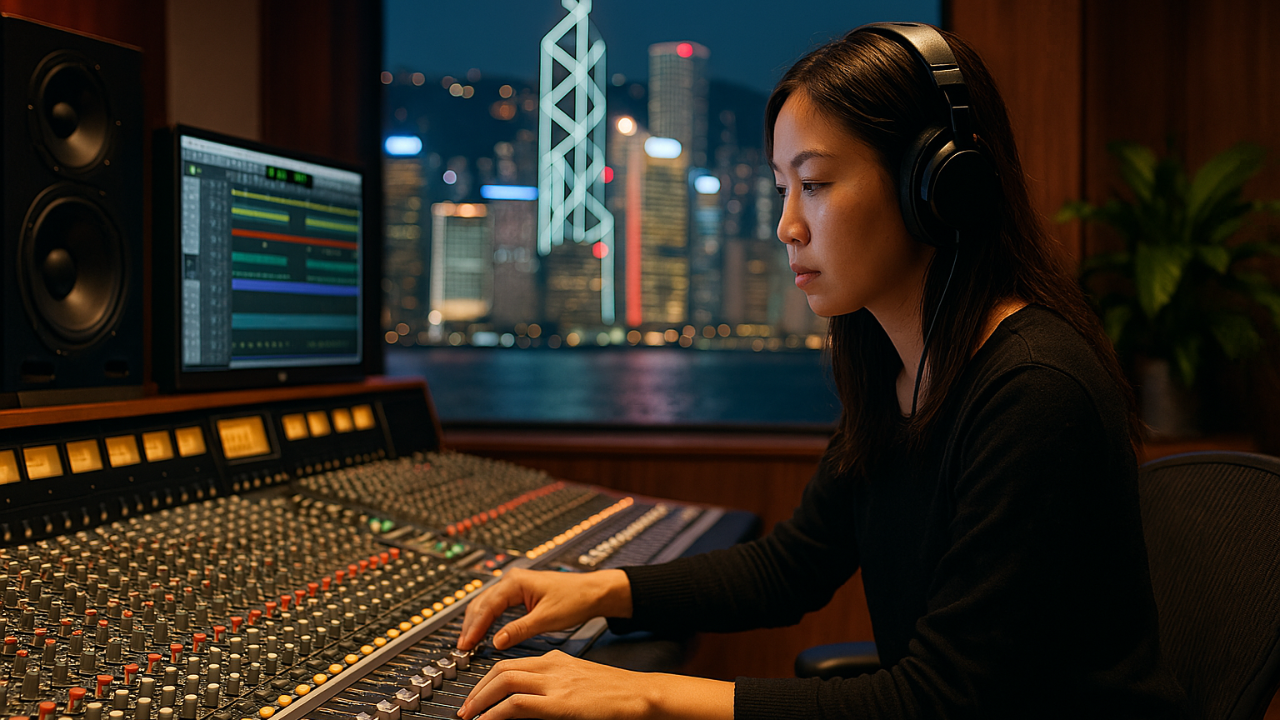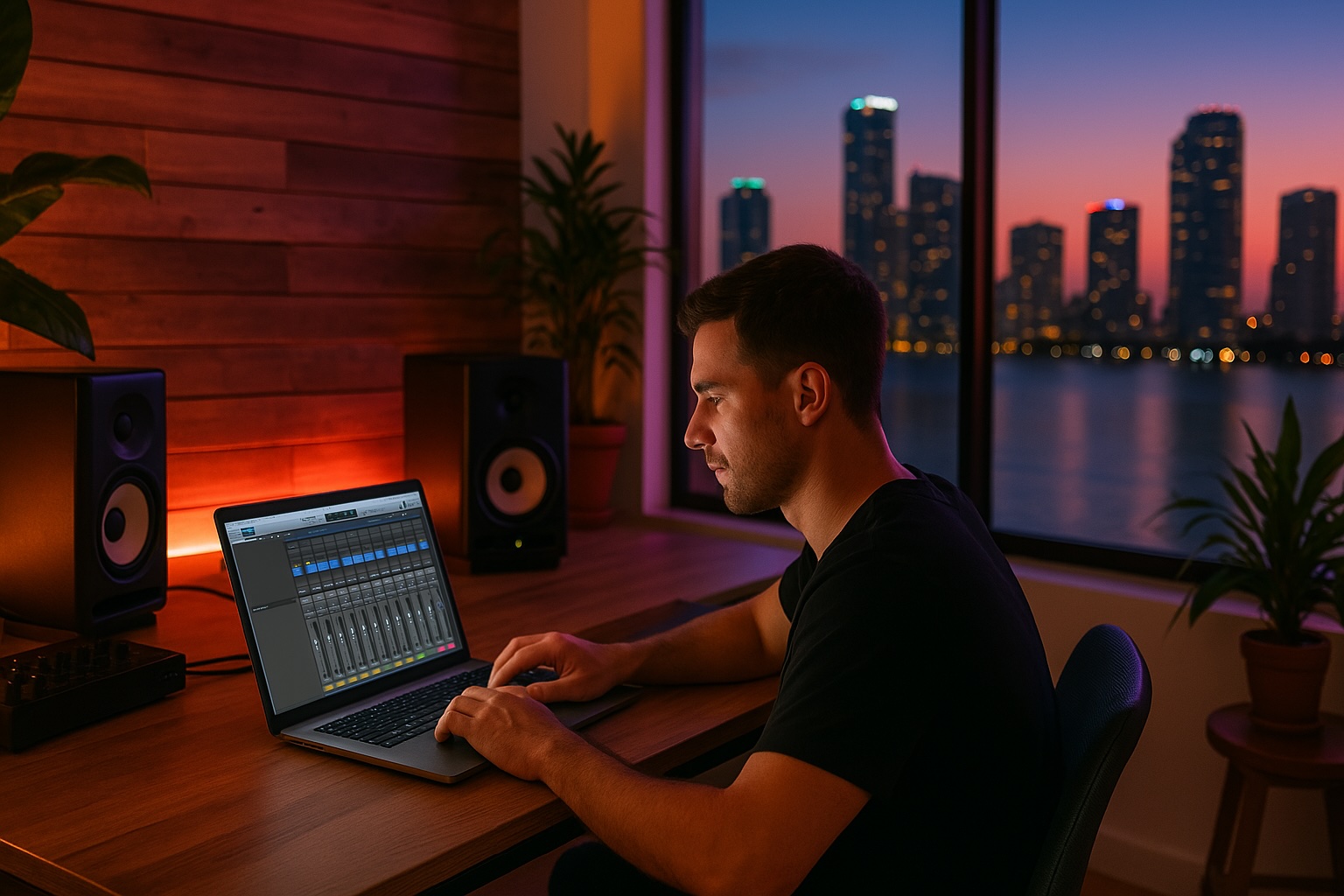What is Mixing in Mono? And When Should I Do It?

You’ve probably heard the phrase “mix in mono” tossed around in music production circles. But what does it actually mean? And why would anyone mix a song without using the full stereo field?
Mixing in mono might sound like a step backward—but in reality, it’s a powerful technique for building clarity, balance, and professional-quality mixes.
Let’s break down what it means to mix in mono, why it matters, and when it makes the most sense in your production workflow.
What Does It Mean to Mix in Mono?
Mixing in mono means collapsing your stereo mix down to a single audio channel, so all your sounds play through the center of the stereo field. No panning. No left/right separation. Just one unified signal.
You can do this by summing your mix to mono—either using a mono plugin on your master bus or a mono button on your audio interface or monitor controller.
Audio Engineering for Noobs: A Beginner's Guide to Sonic Mastery
 ⭐️ Start by downloading all of my FREE Music Production Guides ⭐️ It took me years to learn this stuff!
⭐️ Start by downloading all of my FREE Music Production Guides ⭐️ It took me years to learn this stuff!
Why Mix in Mono?
While music is typically heard in stereo, mono mixing helps you focus on the core foundation of your track.
Benefits of Mixing in Mono:
-
Better balance: If your mix sounds balanced in mono, it will sound amazing in stereo.
-
No panning tricks: Forces you to fix problems with EQ, volume, or arrangement—not just spatial placement.
-
Phase issue detection: Makes it easier to catch elements that cancel each other out when summed to mono.
-
Clearer low end: Helps clean up muddy bass or overlapping kick-and-bass interactions.
-
Improved mono compatibility: Ensures your mix will translate on phones, radios, Bluetooth speakers, or club systems that play in mono.
Mixing in mono is a discipline—it makes you earn your clarity and space without relying on stereo width.
When Should You Mix in Mono?
You don’t have to mix your entire track in mono, but there are key moments in the process when it can be incredibly helpful.
Smart Times to Use Mono Mixing:
-
Early in the mix: Balance your levels, EQ, and compression with everything centered.
-
Low-end tuning: When EQing bass, kick, or 808s, mono helps reveal overlaps and masking.
-
Vocal placement: Helps you find the perfect pocket for the lead vocal in the mix.
-
Mix bus check: Occasionally flip to mono to make sure your mix holds together.
-
Final checks before mastering: A mono check can catch phase issues or buried elements.
Use mono mixing strategically, not religiously. Jump in when you're shaping your mix’s core foundation, then flip back to stereo when you're ready to dial in width and spatial effects.
 ⭐️ Take my Free EXPERIENCE: Ableton Live Mini-Course ⭐️
⭐️ Take my Free EXPERIENCE: Ableton Live Mini-Course ⭐️
How to Mix in Mono
Here are a few easy ways to sum your mix to mono:
-
DAW mono utility plugin: Most DAWs (like Ableton Live’s Utility or Logic Pro’s Gain plugin) let you collapse the stereo signal to mono.
-
Monitor controller mono switch: Some audio interfaces or controllers have a mono button.
-
Mastering plugins: Tools like iZotope Ozone and FabFilter Pro-Q also have mono check features.
Just be sure to bypass the mono summing when you’re done with that stage of the mix.
Final Takeaway
Mixing in mono isn’t about sounding lo-fi or old school—it’s about building stronger, cleaner, and more balanced mixes that hold up across every speaker system.
Use it as a tool, not a rule. Drop into mono when you want to check your mix’s foundation, and you’ll hear your music with a new level of clarity and intention.
Because if it works in mono? It’ll crush in stereo.
Mastering 101: 7 Steps to Make Your Mixes Radio-Ready
⭐️ Download my Free Magic Delay settings Guide ⭐️
⭐️ Download my Free Magic Reverb settings Guide ⭐️
#protools #daw #homestudio #recordingschool #recording #musicproduction
Also read:
9 Must-Know Beatmaking Techniques for Beginner Music Producers in 2025
9 Must-Know Vocal Production Techniques for Beginner Music Producers in 2025
9 Must-Know Music Production Techniques for Beginners and Home Studios in 2025

Hey, I'm Futch - Music Production Coach and Ableton Certified Trainer
Learn how to make your first song and beat in Ableton Live with my
FREE 90-minute Ableton Live course
I've been teaching audio engineering and music production for 35 years.⭐️
Check out my new online music production program: Music Production Ninja...







